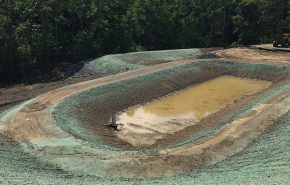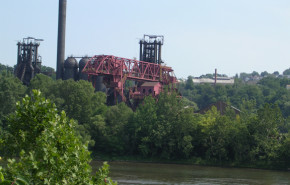An article from The Geological Society of America's Environmental & Engineering Geoscience offers an examination of Pittsburgh geology and how the city's strategic location helped shape westward expansion and US industry. This detailed study features contributions from GAI Sr. Geological Manager Robert Turka, PG, CPG.
ABSTRACT | The City of Pittsburgh, PA is located west of the Appalachian Mountains in the Appalachian Plateaus Province. The relatively flat surface of the plateau is dissected by drainage from the three principal rivers of the region, the Allegheny, Monongahela, and Ohio. The formation of Pittsburgh's three rivers and drainages has a long history dating back to before the Pleistocene Epoch, linked closely to the advance and retreat of continental glaciation.
Western Pennsylvania is associated with the westernmost formation of the Appalachian Mountain chain with deformation in the form of a series of nearly flat-lying, gently warped Paleozoic sedimentary rocks. Rocks cropping out in the region range in age from Devonian to Permian. Pennsylvanian strata are dominated by thin cyclic sequences of sandstone, shale, claystone, coal, and limestone. Most of the geologic hazards present in the region include slope instability, expansive shales and slags, mine subsidence, acid mine drainage, pyritic acid rock and flooding. The region also has an abundance of natural resources including coal, natural gas, oil, salt, limestone, sand and gravel and water.
Pittsburgh’s strategic location helped shape westward expansion during the formation of the Nation, largely because of the rivers, which served as an inexpensive, yet efficient means of transportation. Infrastructure was always significant in Pittsburgh. However, the existing aging infrastructure are deteriorating. Today, Pittsburgh has transcended the legacy name, 'Steel City' and has revitalized itself with nationally-recognized universities and medical centers and a resurgence in natural gas exploration. However, many environmental legacy issues still burden the area.
Please complete the form below to explore this insightful study of Pittsburgh geology.


